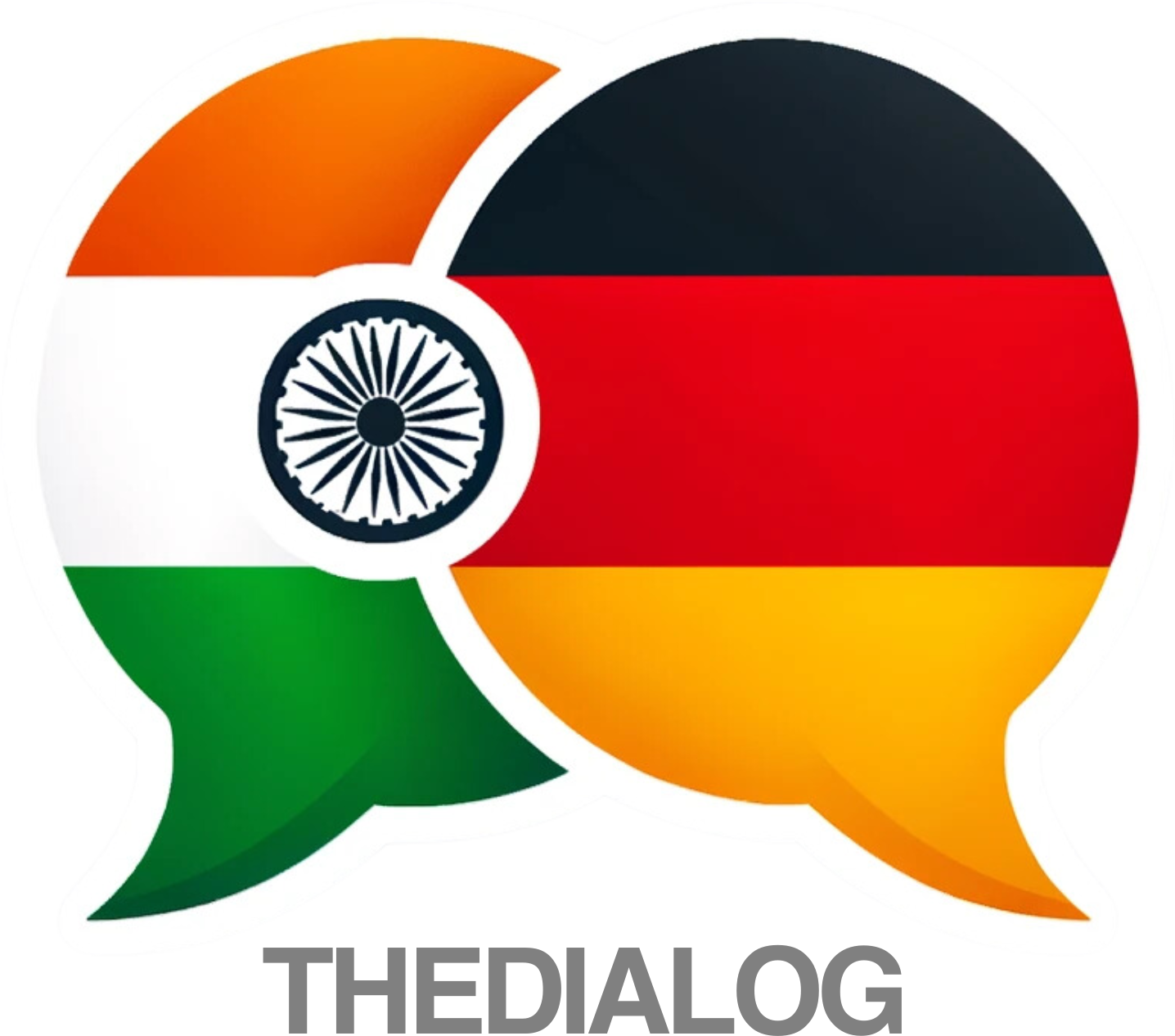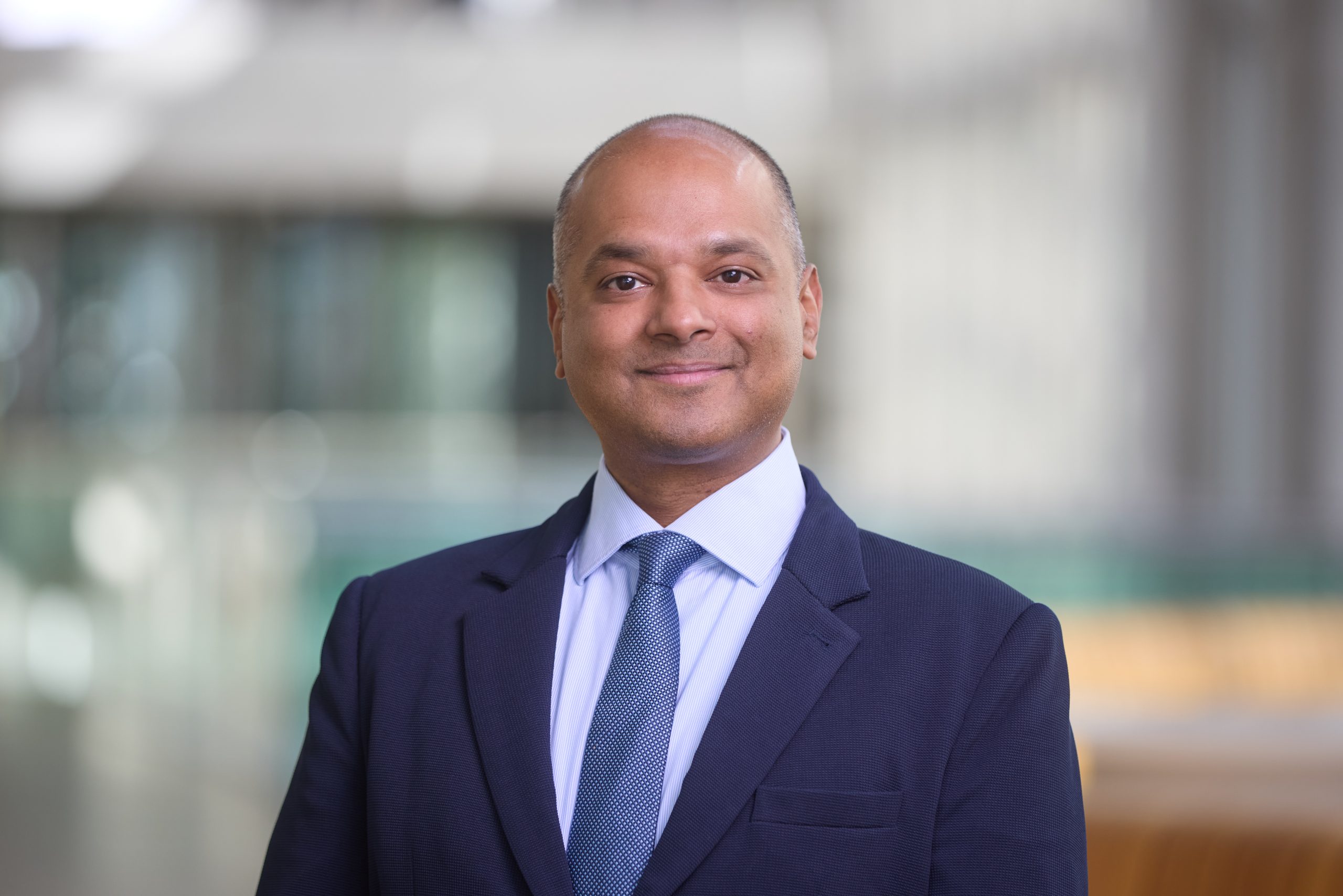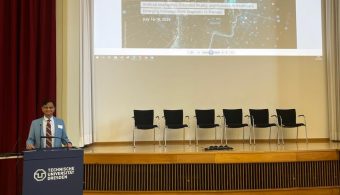For George Ettiyil, Senior Director of Sales for South Asia at Lufthansa Group Airlines, the India-Germany corridor represents more than a vital aviation market—it’s a gateway connecting two dynamic economies, rich cultures, and shared aspirations. Over his 20-year career with Lufthansa, Ettiyil has seen this relationship evolve from government-driven routes to a hub for business, technology, and cultural exchanges.
Raised in Germany but educated in India, Ettiyil’s background has shaped his unique perspective. His formative years at the Indo-German Training Centre instilled values of integrity and purpose that continue to guide his leadership. “My career at Lufthansa has been defined by a relentless drive for excellence and prioritizing customer satisfaction,” he shares.
Under Ettiyil’s stewardship, Lufthansa has expanded its footprint in India, including the launch of Bengaluru’s first international flight in 2001 and the introduction of the Airbus A380 on the Bengaluru-Munich route. “India is one of the most important and strategic markets for the Lufthansa Group,” he emphasizes. The airline is not just growing through flagship operations but also expanding via its sister airline, Swiss.
These developments align with a broader shift in global supply chains and the diversification of economies away from China, with India emerging as a key player. “India is not and will never be China,” Ettiyil says.
With a strong focus on sustainability, Ettiyil is also steering Lufthansa toward greener skies, advocating for innovations like sustainable aviation fuels. Despite his global outlook, Ettiyil’s connection to India remains deeply personal and to the companies exploring India, Ettiyil offers clear advice: “India has many layers and dimensions, and you need patience to discover them”, he reflects.
Ettiyil’s insights, rooted in decades of experience, underscore his belief that aviation is not just about connecting places but fostering meaningful relationships. In a conversation with Pooja Chaturvedi Sah of The Dialog, Ettiyil discusses the evolving Indo-German aviation corridor, Lufthansa’s strategic growth in India, his experience of attending the Asia Pacific Conference, the role of diversification in the global economy, and the future of sustainable air travel.
With over 90 years in India, how has the India Germany aviation corridor evolved? And what makes India such a key growth market for Lufthansa? How does this align with broader Germany India trade ties?
When Lufthansa started 90 years ago, the priorities in the world were probably quite different. It is in the post-World War II and post-Indian independence era that we see the start of a modern relationship between India and Germany. Back then Air India and Lufthansa were government-owned and the dynamics were driven by the governments.
In the 60s and 70s, Lufthansa was more focused on North America/USA. It is with the opening of the Indian economy in the 90s that a change began to occur. Interestingly, the privatization of Lufthansa also occurred in the 90s.
That is when the dynamics strongly changed. We had already started flying to and from Kolkata in the late 50s, then opened Delhi and Mumbai routes. Eventually, we were operating out of only Delhi and Mumbai till the early 90s. In ‘94 we then started off Chennai, which was an important city even in those days and the third largest metro.
And then the IT movement began in Bengaluru, and Bengaluru needed an international carrier. In 2001, Lufthansa was the first international carrier to connect Bangalore to the rest of the world. We have also started off a new Hyderabad-Frankfurt flight and we are continuing to grow in Bengaluru by introducing an Airbus A380 Bengaluru-Munich flight.
Since then, we have been in a constant growth phase in India, which continues until now and India is one of the most important and strategic markets for the Lufthansa group. We are trying to grow, we are establishing a footprint not just with Lufthansa, but with our other group brands. Our sister airline- Swiss- is also looking to expand further in India, in the next couple of years, depending on the aircraft available in our fleet.
The initial growth in the 90s or 2000s was driven by travel between India and the US with Frankfurt acting as a transit point. But what we see since eight, nine years is that there is a huge Indo-German and Indo-European relationship that is growing and occupying a major share also of our business and growing.
What are the main challenges and opportunities Lufthansa has encountered in India? And how does the Indian market differ from Lufthansa’s European markets?
When I look back to the 90s, the airport infrastructure was a bit of a challenge. Airports were not as advanced as they were in other places in the world. Other aspects of operations like ground handling, catering, etc. were also not operating standardized equipment that we were using in other airports and geographies. A challenge that we had in Pune, due to which we had to stop our flights, is that the runway is not long enough.
India has since made some very bold steps in the right direction by privatizing some of its key airports- the new Bengaluru and Hyderabad airports, changing the existing Mumbai airport and Delhi airports into private airports- those were the first real disruptive steps which really brought Indian aviation to high international standards.
Now with the new airports having come up, we realize that the cost of operation in India is high- the royalty charges, the whole infrastructure charges that are levied at Indian airports, especially the prime ones, are far above international standards. We actually have much lower operating costs in European airports than we have in some of the peak and top premium Indian airports.
There is a need for some more competition. So we are keenly looking at, let us say, Navi Mumbai and Noida Airport coming up to level the playing field a little bit.
But the opportunities far outweigh the challenges- the growing relationship between India and Germany, the many tie ups that are happening, the many new forms of organizations that are coming up- GCCs, etc., which many German top corporates have been growing over the past 20, 25 years. Ties driven by technology, education and the cultural closeness that is coming up between India and Germany leading to migration to Germany, etc. are some of the larger opportunities between India and Germany for an airline like Lufthansa.
Sustainability and technology were key themes at APK 2024. How is Lufthansa advancing these priorities in India? And how will digital and green aviation innovations support Germany’s Indo Pacific goals?
Sustainability, of course, coming from the aviation industry and from commercial aviation is an important topic for us. And it has been an important topic since before it became a buzzword.
We have been trying to innovate around sustainability for many years, researching and working with alternative fuels to reduce our carbon footprint. But over a period of time, we have adopted a four-pillar strategy based on fleet modernization, operational efficiency, waste reduction and we are betting big on SAF.
With a more modern fleet consisting of primarily two-engine aircraft, automatically our fuel consumption comes down and therefore has a direct impact also on our carbon footprint.
Then we are looking at internal innovations and we have some of our own. A great example of this is AeroShark. It is a film that we stick onto the fuselage of the aircraft. It mimics the behavior of the skin of sharks, which makes it more aerodynamic and thereby reduces fuel consumption by more than 1%. On a single Boeing 747, this amounts to over 900 tons emission reduction per annum. And that is a lot. If a large airline like Lufthansa with over 700 aircraft can reduce emissions to this magnitude by just sticking a film onto the fuselage, that has an enormous impact.
Then of course, we are trying to reduce any form of single use plastic waste on board. We are also innovating around the entire onboard experience, getting our passengers to select their meal or even where passengers are able to tell us that they don’t want a meal so we don’t have to load things that will get wasted at the end of the day. This will also reduce the weight of the aircraft, thereby reducing the carbon footprint.
While customization will enhance the passenger experience, the more a passenger chooses exactly what she or he wants, the less will be the waste.
Sustainable Aviation Fuel is the biggest game changer. It can be used on existing aircraft and is produced from food waste, agricultural residue, and other sources. Lufthansa Group is the largest purchaser of SAF in Europe and offers Green Fares to create a more carbon neutral travel experience.
You can buy it whenever you buy a ticket with us on lufthansa.com or swiss.com. The add on is a varying degree of the inclusion of SAF into our fleet, thereby giving you as a passenger the immediate possibility to reduce the carbon footprint that you are creating when you travel. And I can only encourage people to use it more because the more you use it, the more confidence will be built for industry to produce more to scale it. And once the scale goes up, of course the cost comes down because right now it nearly costs six times as much as regular fuel.
Since Lufthansa participated in the Asia Pacific Conference 2024, could you tell us about the experience and the key takeaways from the conference?
Overall, my impression of the conference was quite positive and a step in the right direction. It was amazing to witness German industry coming together with not only Indian industry, but also Indian government and German government. India is so sought-after now that at times the relationships of India with other countries are more in the forefront. And I was looking forward to Germany becoming more present.
With the Asia Pacific Conference, we achieved that to some extent. There is still more to do. There needs to be more promotion to let people in India know that there is a close link between Germany and India when it comes to industry, economy, culture, and education.
We are underplaying that, but I think with more initiatives like APK, we are on the right track. So that would be my overall takeaway from the conference.
The conference also touched on the ongoing EU-India FTA talks. What impact could a successful agreement have on Lufthansa’s growth strategy in India and Asia Pacific? How might it shape Lufthansa’s competitive positioning?
It is important to note that aviation is not covered in the FTA.
So from a regulatory perspective, nothing much would change. Aviation remains a bilateral subject between India and the respective country in the EU and I would not see any major change in that. Having said that, if there is an FTA between the EU and India in many other sectors, then obviously European and Indian carriers will and should benefit from it. Currently, from an aviation perspective, the traffic between Europe and India is dominated more by carriers from the Gulf countries.
That should not be the case. We should have competition. Competition is good, but a third party should not dominate. Closer EU-India ties and an FTA could help aviation companies in both regions take ownership of the traffic between them.
How do you see Lufthansa’s role in advancing Germany’s goals in the Indo-Pacific, especially as this region gains prominence in global value chains?
Lufthansa Group’s mission statement is to connect people, economies, and cultures in a sustainable way. I think connectivity between regions in the world is the key to relationships, to peace, to wealth. Whatever happens or whatever Germany strives to do in the world, I think aviation did, does and will continue to be an important enabler.
How does Lufthansa view its partnership with Air India under the Star Alliance? And what synergies could further enhance Indo German connectivity and business?
Lufthansa was the patron of Air India over 15 years ago to become a member of Star Alliance. And that is how we have been viewing Air India- as a partner with whom we want to have and deepen our relationship.
The privatization of Air India is now a huge disruptor where we see even greater opportunities. The potential for Air India to grow and become a major player in the airline industry is an exciting prospect. The idea of partnering with them and working together to become leading airlines in the world is an opportunity we look forward to pursuing. We are eager to build a strong relationship and take it to the next level. Beyond the Star Alliance, we are aspiring to take the relationship a step further where an end consumer who chooses Lufthansa and Air India will experience even more seamlessness.
Air India will be the strong partner in India that connects first, second and third tier cities into our trunk routes. The trunk routes are the routes that we are plying between India and Germany. And Lufthansa Group at the other end, be it from Germany, but also from Switzerland, Austria, or Belgium, can be the one that is offering Air India passengers and our common passengers then connectivity within Europe.
You see two geographical systems forming one network to provide an amazing spectrum of possibilities to fly and to reach any destination within India or Europe.
What advice would you give to a German company entering the Indian market and vice versa?
The global economy and supply chains are at a critical juncture, prompting a need for diversification away from China. China is going to remain important for everybody in the world. But there is a realization that it cannot just be China.
This is where India comes into the picture. Against this backdrop, the advice that I would give every German company would be that India is not and will never be China. India is India and one must discover India with an independent and open mind.
The sentence, you cannot judge a book by its cover would fully apply to India. India has many, many levels, and many dimensions which one needs to discover. And you need a lot of patience because business is done differently. Relationships are built differently in India than they are perhaps in China or in the Western hemisphere. But I think if you have really taken three to five years to figure out how to do business in India, once you have got that formula figured out, it is only upwards.
Same applies for Indian companies also wanting to go to Germany. Business is done very differently. The culture is quite different. In India, people are extremely connected and people want to connect. In Germany it is more about the processes, a certain way of doing things. And they are extremely complicated because the regulatory environment in Germany or Europe has a certain challenge to it. Once you have crossed through all those regulatory issues and you have understood them and you have mastered them, then there is an assured return. Labor law is also a vastly different ballgame over there. While labor costs seem higher and labor regulations seem far stricter, the productivity in countries like Germany is also far higher.
I would like to share a recent experience I just had in India. We were doing a German sausage and food stall in Bengaluru for a Christmas market and we needed 21 people to make that happen. And I had two colleagues from Germany there saying “George, in Germany we would have done this with six people”. But then the behavior also of the customer would be different, the expectations would be different. So while you can do the same thing with six people in Germany, you need twenty-one in India.
So there are these discoveries that need to be made.



